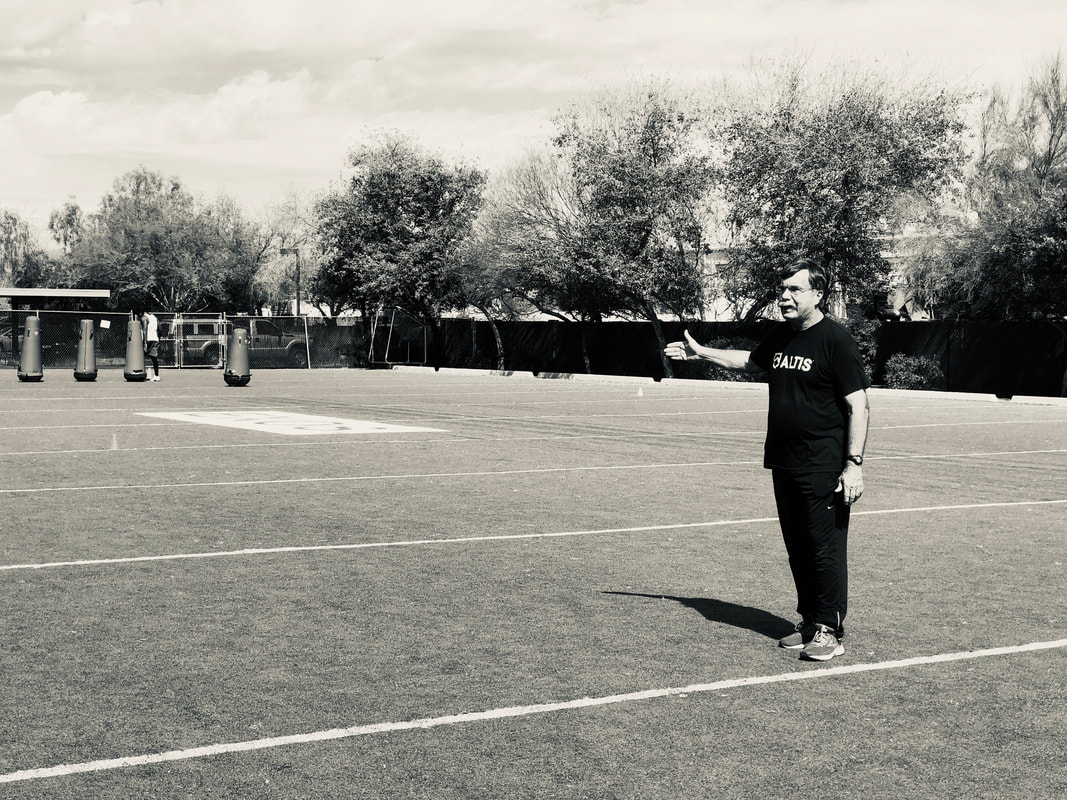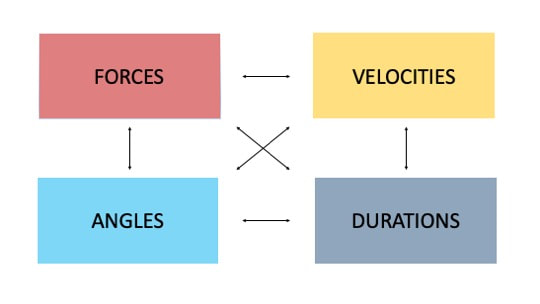|
Here is a VERY brief summary of my notes taken from Coach Pfaff's short workshop on Dribbles during the ALTIS ACP I attended in early 2019. It should be noted that these notes are based on my understanding and interpretations so will defer to Dan and the ALTIS staff, as well as those more experienced for any corrections. However, I have included a video below from Coach Enyia that is both detailed and succinct. Dribbles: An upright, truncated drill that can be utilized at any point during rehabilitation and performance training for the purposes of improving stiffness, as well as promoting and stabilizing coordination of human locomotion. In addition to the sporting environment, dribbles can and have been used in gait retraining, neurorehab, and general musculoskeletal therapy. In the early phases of rehabilitation (for example with ankle injuries and hamstring strains) walking dribbles can be initiated. Dribbles regressed to this form may not only help preserve coordination but also assist in initiating soft tissue healing and regeneration through increased rate of circulation as well as controlled mechanotransduction. We know that the plantar venous pump is stimulated via muscular compression and contraction so any opportunity to do so actively should permit a more seamless return to pre-injury locomotion. Following this, progression can move toward jogging dribbles and eventually acceleration dribbles. The main constant in dribbles, regardless of speed, is a full heel to forefoot/toe rolling contact. Posture is upright and stable, yet exhibiting a dynamically controlled rhythm at all times. Depending on athlete need and ability, three different heights can be used, ankle dribbles, calf dribbles, and knee dribbles. Additionally, progressions would move from a more basic concentric (circular) shape to a more elliptical (egg) shape. Again, with respect to early stages of rehabilitation, one can maximize safety with concentric ankle dribbles. Finally, as tissue remodelling is influenced by forces, velocities, angles and duration, it is important to incorporate the various combinations of each . Loading must be varied and widespread as opposed to unidimensional and and linear. Progressions Mode:
Heights:
Shapes:
Loading Parameters:
0 Comments
Leave a Reply. |

